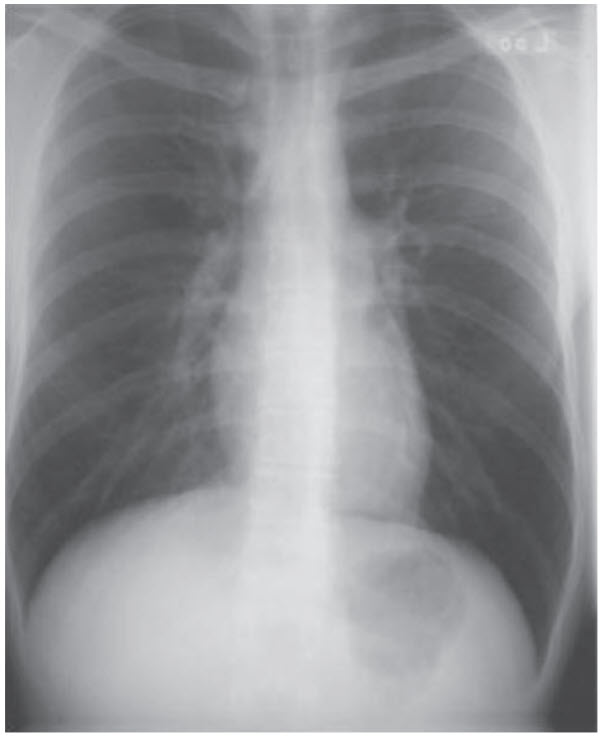Question 98#
A 55-year-old woman presents to the office with a 1-week history of dry cough, sore throat, and nasal congestion. She has a 5 pack-year smoking history but successfully quit over 15 years ago. She was diagnosed with asthma as a child and used an albuterol inhaler intermittently, but has not seen a physician or received an inhaler in the last 10 years. The patient’s temperature is 36.7°C, blood pressure is 120/80 mmHg, and heart rate is 72 beats per minute. Mild rhinorrhea is present but there are no other significant examination findings. A chest radiograph is obtained and shown below.

What is the best next step in management of this patient?
A. Albuterol inhalerB. CT chest
C. Azithromycin
D. Reassurance
E. Rapid strep testing
Correct Answer is D
Comment:
Reassurance. This patient has findings of an upper respiratory infection (URI) including nasal congestion, sore throat, cough, and rhinorrhea. Other common features are sneezing and malaise. The most common pathogens associated with URI include rhinovirus, coronavirus, parainfluenza virus, adenovirus, enterovirus, and RSV. No medications have been demonstrated to shorten the duration of illness, thus reassurance is the correct answer. (A) An albuterol inhaler or nebulizer would be the appropriate treatment if the patient had an asthma exacerbation. However, the patient’s only distant history of asthma and absence of wheezing on lung examination make this diagnosis unlikely. (B) Further evaluation with CT imaging is inappropriate given her normal examination and normal chest radiograph. (C) Azithromycin would be an appropriate answer for a COPD exacerbation; however, her smoking history is minimal and her presenting symptoms lack sputum production or dyspnea. (D) A rapid strep test would be appropriate if the patient met two to three Centor criteria; however, she has a cough without fever, tonsillar exudates, or lymphadenopathy, which gives her a score of zero and makes her risk of streptococcal infection less than 10%.